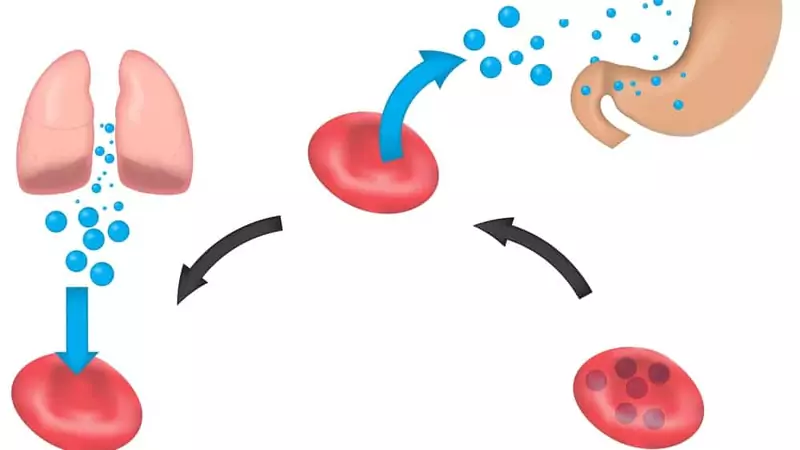Bad Breath from Lungs
In respiratory halitosis, the odor originates from the breath, not from the mouth. In other words, the bad-smelling breath that causes bad breath comes from the lungs. Bad breath (halitosis) and bad-smelling breath are different things. The source of bad breath is inside the mouth. However, the gases expelled from the lungs through respiration cause breath odor. Bad-smelling volatile substances mixed with the gases exhaled through exhalation form breath odor.
Causes of Bad Breath From Lungs
There are two main sources of malodorous volatile substances that mix with the gases expelled through the lungs. The first of these are volatile substances that enter the breath from the lung’s parenchyma tissue. The other is the gases that mix with the blood from other organs of the body and come to the alveoli of the lungs through the bloodstream and exhale through the breath.
Bad-smelling gases created by bacteria due to an infection in the lung or lower respiratory tract are discharged by mixing with the exhaled breath. In other words, an infection or inflammation in the lung can be the cause of bad-smelling breath, although it is rare. The other reason is that bad-smelling volatile substances that pass into our blood from distant organs (digestive canal, liver, kidney, etc.) are mixed with blood gases and are expelled from the lungs by breathing.
Bad Breath Smells: Overview
Respiratory smelly gases rise to the mouth with breath. In other words, the bad smell comes from the breath, not from the mouth. These patients may have bad breath or bad breath at a physiological level. But often the main source of odor is the breath itself.
Breath gases are blood gases, and we exhale certain odorous volatile substances that accumulate in the blood. In some cases, the number or concentration of odorous volatile substances in the blood may be higher. For example, diabetics have acidosis in their blood and their breath smells like acetone. Patients with kidney failure, on the other hand, have a smell of ammonia on their breath. Those who use drugs continuously (especially chronic patients) may also have bad breath. These are not conditions that the dentist can treat because the mouth does not smell.
Bad Breath Smells Originating from the Digestive System
Gases coming from the digestive canal can be expelled more easily by breathing. In particular, hydrogen gas, an odorless gas, originates from the digestive tract. Often this condition is associated with certain intestinal diseases such as lactose intolerance, ileocecal valve leaking, Celiac disease, chronic constipation, and irritable bowel syndrome. The human body does not produce hydrogen gas. Therefore, if the concentration of hydrogen gas in the breath increased, it was a result of bacterial activity.
Symptoms of Bad Breath Smells
In some cases, malodorous gases that we exhale by expiration rise upwards from the nasal and oral cavities come into contact with the eyes and irritate the conjunctiva. Especially the tearing and burning eyes we see in diabetics are related to this. In other words, such situations are not the result of the eye’s defect. A similar situation is also present in ear-nose-throat-originated halitosis. Apart from this, the level of breath odor can change during effort and generally decrease.
Diagnosis and Treatment of Bad Breath from Lungs
A certain part of halitosis patients is smelly breath patients. Therefore, it mostly concerns internal medicine and rarely lung disease doctors. However, it would be more accurate for patients to confirm that their breathing itself causes halitosis by first consulting their dentist. Especially, zinc-containing breath-freshening oral care products such as mouthwash (eg, TheraBreath Fresh Breath, Tom’s of Maine Natural Wicked Fresh, etc.) or chewing gum (eg, CB12 Boost Sugar Free, etc.) may provide symptomatic benefits for people who experience such conditions.
References
American Dental Association:“Bad Breath: 6 Causes (and 6 Solutions)”
Mayo Clinic: Diseases and Conditions, “Bad Breath”
Oral Health Foundation: “Bad Breath”
PubMed: “A new measurement protocol to differentiate sources of halitosis”
PubMed: “Halitosis: a new definition and classification”

